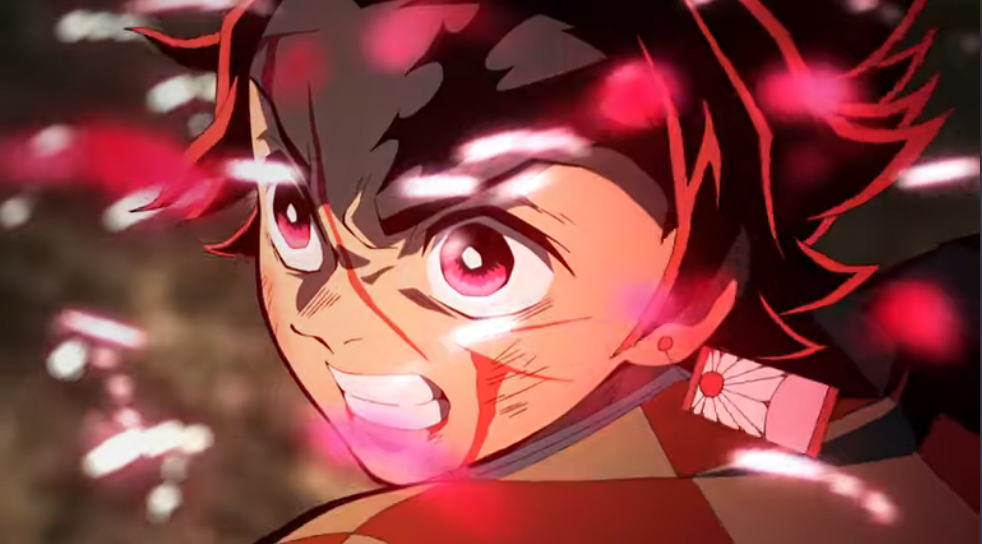Anime Review: Demon Slayer
For hundreds of years, oni (“demons” or “ogres”) have infested Japan. These monsters roam at night, finding human victims to kill and eat, usually in that order. Opposing them are the order of Demon Slayers, armed with special swords that are one of the two known ways to kill a demon. It is the dawn of the Taisho Era (1912-1926), but instead of fading into legend with the incursion of new technology, demonic activity is on the rise.

Not that Tanjiro Kamado is initially aware of most of these things. He lives with his widowed mother and five siblings near a remote mountain village, and keeps the family afloat by selling charcoal. One winter’s day, he goes into the village with his wares, and because he’s a kind young man who likes helping people, by the time he’s ready to leave, night has already fallen. It’s too dangerous to be out alone at night, so Tanjiro accepts an invitation to stay with a villager.
Dawn breaks overcast, and Tanjiro heads up the mountain. At home, he discovers that his entire family has been attacked and partially devoured by demons–but his sister Nezuko isn’t quite dead yet. Tanjiro takes her on his back to try to get her to a doctor, but the reason for Nezuko’s survival is that she herself has become a demon! A demon slayer appears and tries to save Tanjiro by killing Nezuko, but against all expectations, not only does Tanjiro object, but Nezuko also not only doesn’t attack Tanjiro, but tries to protect him from the demon slayer!
Giyu Tomioka, the demon slayer, is convinced there’s something unprecedented going on here, so agrees to let Nezuko live for the moment, if Tanjiro will go to a sword master for training in the demon slayer ways, being thus able to kill Nezuko should she ever turn manslayer.
This anime series, titled Kimetsu no Yaiba (roughly “Demon-destroying blade”) in Japan, was based on a shounen manga series of the same name that ran in Shounen Jump Weekly from 2016-2020. The manga was something of a surprise hit, as it polled poorly at first (at least partially due to the artist going with a more horror-suitable art style initially) but after the main plotline started kicking in and the art style was tweaked, it became very popular. (The anime retroactively applied the new art style to the older chapters.)
In addition to their special swords, each demon slayer learns a specialized sword style that involves a particular rhythm of breathing (these are shown to the audience as special effects like waves crashing or lightning striking.) And most demons have special supernatural powers, so the fight scenes have variety and excitement.
Later on, Tanjiro is joined by two other novice demon slayers, Zenitsu the sniveling, self-centered coward (who has superhuman hearing), and Inosuke, an overconfident boy raised in the wild who wears a boar’s head for a helmet. Their contrasting personalities make for amusing quarrels and culture clash.
Tragic backstories abound: Not only most of the demon slayers (usually motivating them joining the organization) but a number of the demons as well. We see glimpses of the latter as Tanjiro’s compassionate heart allows him to reach out to the inner person at the moment of final death.
The overarcing plot of the series is that all demons were once human, and the vast majority of them were turned into monsters by one progenitor, who may know the secret of turning them back. Tanjiro really, really wants that for his sister.
While Nezuko becomes a more or less equal partner to Tanjiro in combat, she loses her ability to speak coherently in the first episode, and spends most of the time between combats asleep. With the limitations of the animation style in regards to subtle body language and gesture, this makes her personality subdued and difficult to read.
Content note: In addition to lots of violence, much gory, and frequent harm to children, the demons sometimes indulge in other unpleasantness not for the squeamish to watch. Zenitsu is whiny and needy towards women, and his progress in this area is slow. I’d recommend older teens on up.
Unusually for this kind of shounen battle series, the first season ends not immediately after a big fight, but after the long rehabilitation needed after that battle, cutting off just as our protagonists get on to the train that’s the next big plotline, which got its own movie.
This is a good series for battle fans, the Taisho Era is less explored, and the manga is reputed to have stayed consistently above average through the ending, so future seasons may also please. You might want to watch it before the movie, though.

